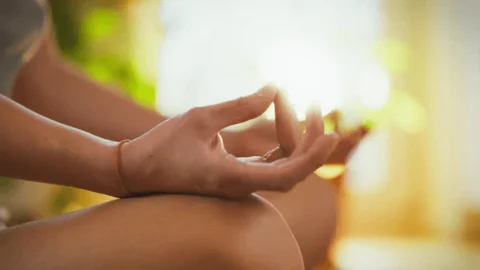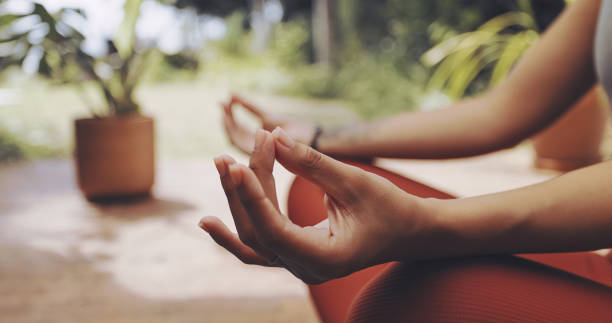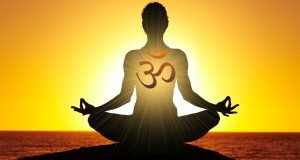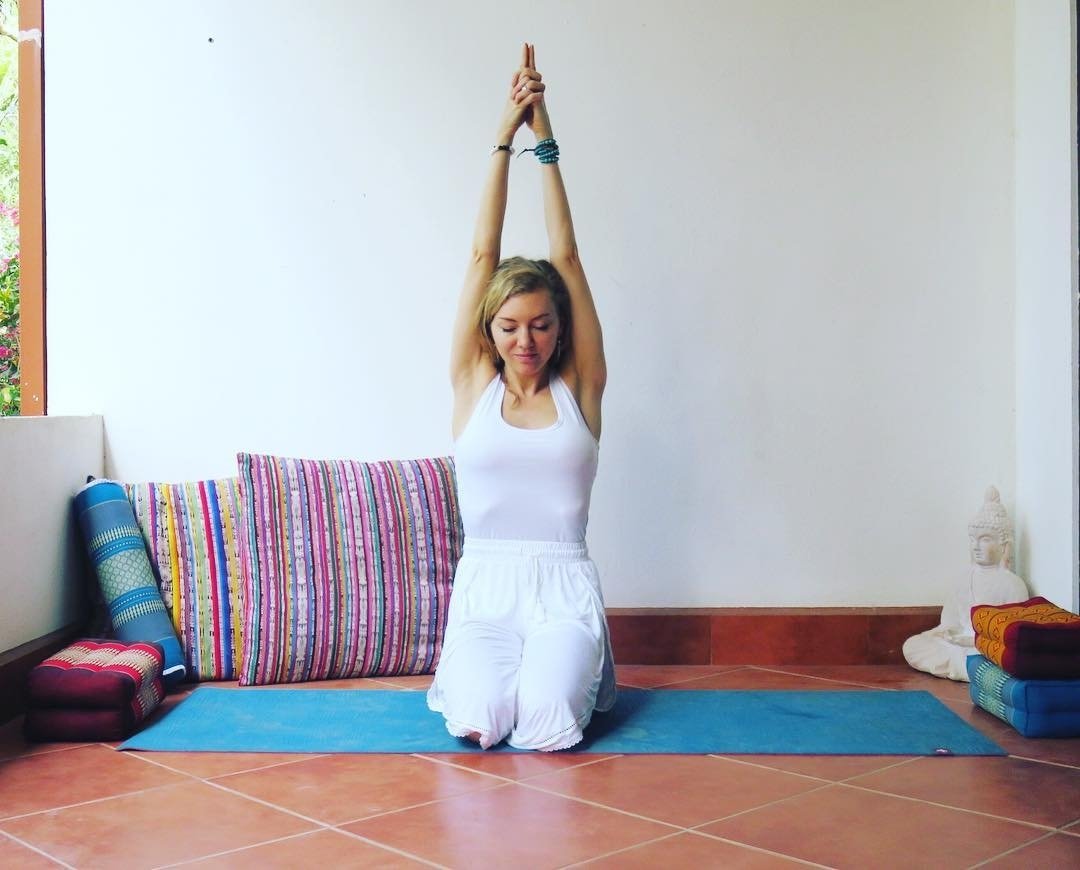By incorporating mudras into meditation, practitioners can activate specific energy pathways, enhance concentration, and heal imbalances in the body. These gestures are not just symbolic; they are tools for hand healing, working on the principle that the fingers represent the five elements of nature earth, water, fire, air, and ether. Balancing these elements through mudras harmonizes the body and mind, paving the way for deeper states of awareness. This article explores the world of mudras, their origins, scientific perspective, types, and their application in meditation for holistic healing. So, let’s know about Mudras & Hand Healing.
The Origins of Mudras & Hand Healing:
Meditation has long been recognized as a powerful practice for cultivating inner peace, focus, and spiritual growth. While most people associate meditation with breathing techniques, mindfulness, or mantra chanting, a lesser-known but equally potent practice involves the use of Mudras & Hand Healing—symbolic hand gestures that channel and redirect energy within the body. Rooted in ancient yogic and Ayurvedic traditions, mudras are believed to influence physical, emotional, and spiritual well-being.
Mudras & Hand Healing have their roots in ancient Indian spiritual practices. They are widely mentioned in texts such as the Vedas, Upanishads, and various yogic scriptures. The word mudra is derived from Sanskrit, meaning “seal,” “gesture,” or “symbol.” In the context of meditation, mudras act as seals that direct energy flow, creating a bridge between the physical and subtle bodies.
In addition to yoga, Mudras & Hand Healing are integral to Buddhist meditation, classical Indian dance forms, and even Tantric rituals. Over centuries, they evolved into therapeutic tools, with Ayurveda recognizing their role in balancing the doshas (Vata, Pitta, Kapha) and improving overall health.
The Science Behind Mudras & Hand Healing:
Though rooted in spiritual traditions, mudras also have a scientific basis. According to yogic philosophy, the five fingers represent the five universal elements:
- Thumb – Fire (Agni)
- Index finger – Air (Vayu)
- Middle finger – Ether (Akash)
- Ring finger – Earth (Prithvi)
- Little finger – Water (Jal)
Imbalances in these elements are believed to cause physical or mental distress. By placing fingers in specific patterns, mudras regulate pranic (life-force) energy, restore balance, and stimulate healing.
From a physiological standpoint, mudras involve reflexology and nerve stimulation. The fingertips are rich in nerve endings, and when pressed in particular ways, they influence corresponding organs and energy centers in the body. Modern neuroscience suggests that hand gestures can influence brain activity, reduce stress, and promote mindfulness.
Benefits of Practicing Mudras & Hand Healing in Meditation:
Mudras & Hand Healing, when combined with meditation, are not just symbolic hand gestures they are powerful tools that can influence the flow of prana (life energy) within the body. By forming specific finger positions, one can redirect energy to heal, balance, and strengthen the body and mind. Practicing mudras regularly during meditation offers a wide range of benefits:
Balances the Five Elements:
Each finger represents an element—earth, water, fire, air, and ether. Imbalances in these elements can cause physical or emotional disturbances. Mudras help restore equilibrium, ensuring smooth energy flow and overall harmony within the body.
Enhances Focus and Concentration:
Mudras like Gyan Mudra and Hakini Mudra sharpen memory, improve concentration, and calm wandering thoughts. This makes them ideal for students, professionals, and anyone seeking mental clarity in meditation.
Reduces Stress and Anxiety:
Certain mudras, such as Chin Mudra and Anjali Mudra, activate the parasympathetic nervous system, which relaxes the body and mind. They lower stress hormones, reduce restlessness, and bring emotional stability.
Supports Physical Healing:
Many mudras are linked to improved health. For instance, Prana Mudra boosts vitality and immunity, while Varun Mudra enhances hydration and skin health. By stimulating nerve endings and energy points, mudras can relieve headaches, digestive issues, joint pain, and respiratory problems.
Improves Emotional Balance:
Mudras influence mood and emotional states. Varun Mudra helps manage emotional swings, while Vayu Mudra reduces nervousness. These gestures encourage inner calm, patience, and resilience, making meditation more effective.
Deepens Spiritual Awareness:
Beyond physical and emotional healing, mudras support spiritual growth. Dhyana Mudra, for example, symbolizes balance and oneness, helping practitioners enter deeper meditative states and connect with higher consciousness.
Boosts Energy Levels:
Mudras regulate prana and enhance vitality. Prana Mudra and Surya Mudra stimulate energy flow, combating fatigue and lethargy. This makes daily meditation sessions more energizing and uplifting.
Activates Chakras:
Mudras are often used to stimulate and balance chakras. For example, Anjali Mudra opens the heart chakra, fostering love and gratitude, while Hakini Mudra energizes the third eye chakra, enhancing intuition.
Accessible and Safe Practice:
One of the greatest benefits of mudras is their simplicity. They can be practiced anywhere, anytime, without requiring props or prior experience. Unlike strenuous practices, mudras are gentle yet powerful.
Enhances Meditation Experience:
Ultimately, Mudras & Hand Healing enrich meditation by synchronizing the body, mind, and spirit. They provide a physical anchor for awareness, allowing practitioners to meditate with deeper stillness and clarity.
Major Mudras & Hand Healing and Their Healing Powers:
Mudras & Hand Healing are ancient hand gestures that hold profound healing powers, influencing the mind, body, and spirit. Each mudra connects to specific elements, chakras, and energy pathways, helping to restore balance and promote well-being. Practicing these gestures during meditation not only deepens focus but also supports physical health, emotional stability, and spiritual growth, making them essential tools for holistic healing.
Below are some widely practiced mudras, their benefits, and how they support meditation and hand healing:
1. Gyan Mudra (Mudra of Knowledge)
-
How to do: Touch the tip of the index finger to the thumb while keeping other fingers straight.
-
Benefits: Enhances memory, focus, and concentration; relieves stress and anxiety; stimulates the root chakra.
-
Best for: Beginners in meditation and students.
2. Chin Mudra (Consciousness Gesture)
-
How to do: Similar to Gyan Mudra, but palms face upward.
-
Benefits: Promotes calmness, uplifts mood, and deepens meditation.
-
Best for: Morning meditation for positivity.
3. Dhyana Mudra (Gesture of Meditation)
-
How to do: Place right hand on top of the left hand with palms facing upward; thumbs gently touch. Rest hands on the lap.
-
Benefits: Symbolizes balance and inner harmony; ideal for long meditation sessions.
-
Best for: Achieving deep meditative states.
4. Prana Mudra (Life Force Gesture)
-
How to do: Touch the tips of the ring and little finger to the thumb while keeping index and middle fingers straight.
-
Benefits: Boosts energy, strengthens immunity, reduces fatigue, and enhances vitality.
-
Best for: Healing and energy restoration practices.
5. Apana Mudra (Purification Gesture)
-
How to do: Touch the tips of the middle and ring fingers to the thumb while keeping other fingers straight.
-
Benefits: Helps in detoxification, digestion, and expelling negative energy.
-
Best for: Evening meditation to cleanse the mind and body.
6. Surya Mudra (Sun Gesture)
-
How to do: Fold the ring finger and press it with the thumb while keeping the other fingers straight.
-
Benefits: Stimulates metabolism, aids in weight loss, balances thyroid, and increases body heat.
-
Best for: People with sluggish digestion or low energy.
7. Varun Mudra (Water Gesture)
-
How to do: Touch the little finger tip to the thumb while keeping other fingers straight.
-
Benefits: Enhances skin health, improves hydration, relieves joint pain, and balances emotions.
-
Best for: Emotional healing during meditation.
8. Vayu Mudra (Air Gesture)
-
How to do: Fold the index finger and press it with the thumb while keeping other fingers straight.
-
Benefits: Calms nervousness, reduces gas-related issues, and balances Vata energy.
-
Best for: Stress relief practices.
9. Hakini Mudra (Mind Power Gesture)
-
How to do: Bring fingertips of both hands together without pressing. Keep palms apart.
-
Benefits: Enhances memory, sharpens intellect, and balances the hemispheres of the brain.
-
Best for: Concentration during study or work.
10. Anjali Mudra (Prayer Gesture)
-
How to do: Join palms together at the heart center.
-
Benefits: Symbol of respect and devotion; promotes humility, gratitude, and heart chakra activation.
-
Best for: Opening or closing meditation sessions.
How to Practice Mudras & Hand Healing in Meditation:
Practicing Mudras & Hand Healing in meditation is a simple yet powerful way to channel energy, balance the body’s elements, and deepen inner focus. These hand gestures work as energy locks that enhance concentration, calm the mind, and promote healing. By combining mudras with mindful breathing and meditation, practitioners can experience greater peace, harmony, and overall well-being in daily life.
- Choose the Right Mudra: Select based on your goal—calmness, healing, or focus.
- Sit Comfortably: Adopt a meditative posture such as Padmasana, Sukhasana, or simply sit in a chair with spine erect.
- Focus on Breath: Begin with slow, deep breathing to center the mind.
- Form the Mudra: Gently place your fingers into the mudra, without straining.
- Meditate with Intention: Combine the mudra with mantra chanting, visualization, or simple mindfulness.
- Duration: Practice for 15–30 minutes daily for optimal benefits.
Hand Healing Through Mudras:
Hand healing is based on the premise that hands are powerful energy centers. Each fingertip corresponds to an organ and chakra:
- Thumb (Fire) → Solar Plexus Chakra
- Index (Air) → Heart Chakra
- Middle (Ether) → Throat Chakra
- Ring (Earth) → Root Chakra
- Little (Water) → Sacral Chakra
By consciously activating these through mudras, practitioners can:
- Heal organ dysfunctions.
- Balance energy in chakras.
- Release emotional blockages.
- Improve blood circulation and nerve flow.
For example, Prana Mudra enhances vitality, while Varun Mudra improves hydration and skin health. This makes mudras a non-invasive, accessible form of healing available to anyone.
Scientific Evidence on Mudras & Hand Healing:
While more research is needed, several studies highlight the benefits of Mudras & Hand Healing:
- Neuroscientific findings suggest hand gestures activate certain brain regions, improving memory and motor control.
- Ayurvedic research indicates mudras help regulate doshas, which directly influence health.
- Psychological studies show gestures like Anjali Mudra can reduce anxiety and promote social bonding.
- Clinical trials on Prana Mudra demonstrated improved immunity and reduced fatigue in chronic illness patients.
This growing body of evidence bridges ancient wisdom with modern science, validating Mudras & Hand Healing as a complementary therapy.
Tips for Beginners:
- Start with simple mudras like Gyan, Chin, or Anjali.
- Practice consistently, even for 10–15 minutes a day.
- Stay mindful of your breathing while holding mudras.
- Avoid forcing fingers; keep gestures relaxed.
- Combine with yoga asanas or pranayama for deeper benefits.
Precautions:
- Mudras are safe, but should not replace medical treatment.
- People with severe health conditions should consult a doctor before using mudras as therapy.
- Avoid practicing on a full stomach.
- Some mudras, like Surya Mudra, should be avoided during fever or dehydration, as they increase body heat.
Conclusion:
Mudras & Hand Healing are more than symbolic gestures; they are powerful tools for healing, balance, and self-realization. By incorporating them into meditation, one can experience profound physical, emotional, and spiritual benefits. These simple hand positions open energy channels, harmonize the elements within, and deepen the meditative journey.
Whether you seek stress relief, improved concentration, or holistic healing, mudras provide an accessible and effective pathway. Practiced with consistency and awareness, they can transform not only your meditation practice but also your overall well-being.
FAQ:
Q. Can beginners practice mudras?
A. Yes, mudras are safe and easy for beginners. Start with simple ones like Gyan or Anjali Mudra.
Q. How long should I practice mudras daily?
A. 15–30 minutes is ideal, but even 5–10 minutes can yield benefits if practiced consistently.
Q. Do mudras really heal diseases?
A. Mudras support natural healing and balance, but they are not a replacement for medical care.
Q. Can mudras be practiced anytime?
A. Yes, but morning meditation is considered most effective. Some mudras, like Surya Mudra, are best practiced during the day.
Q. Do mudras have side effects?
A. Generally, no. However, over-practicing heating mudras like Surya Mudra may cause dehydration.






